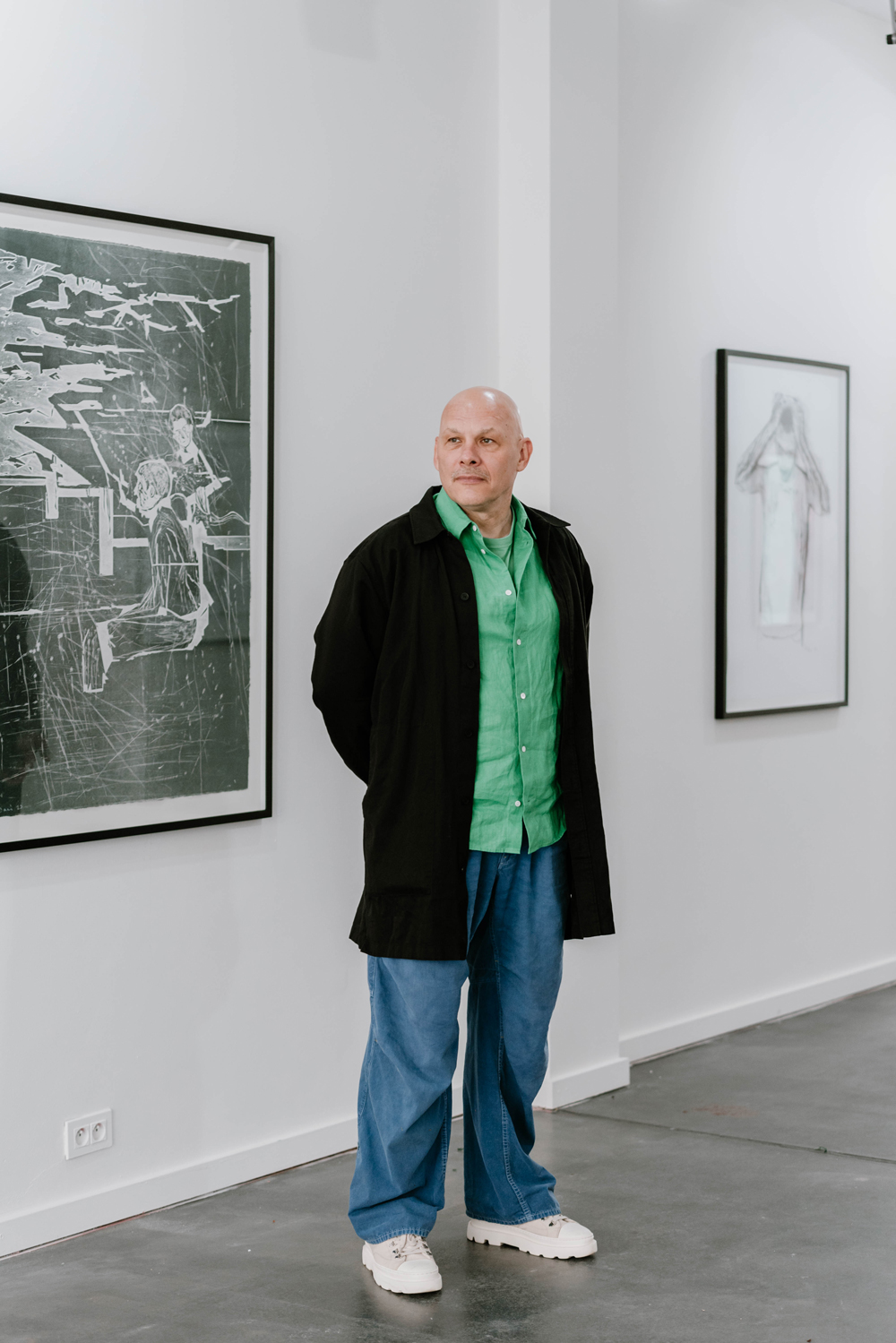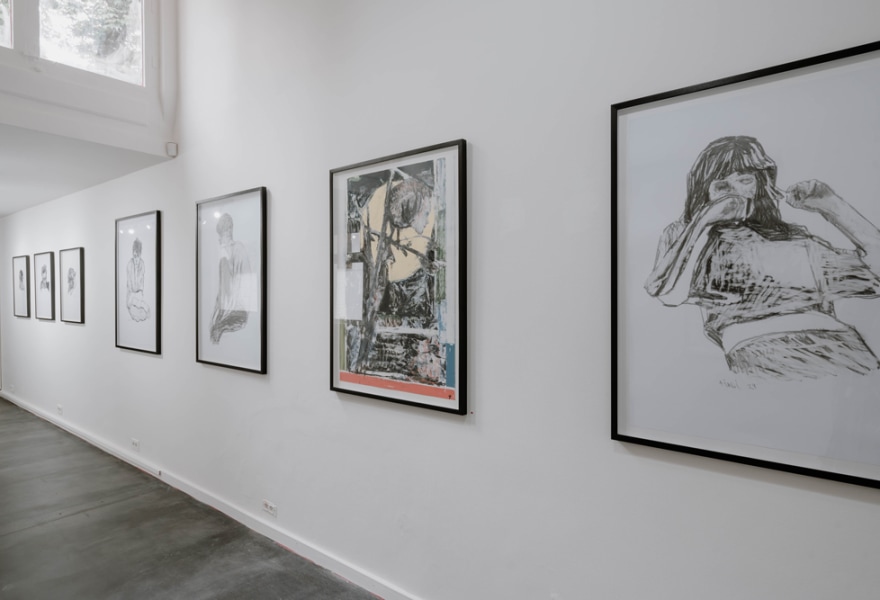20 may 2024, Yves Joris
Alexander Tinei and a fascinating reflection on the human condition
The exhibition Orange Offset with work by Alexander Tinei at the NQ Gallery marks a new phase in the still-unfolding career of this artist. Born in 1967 in Căuşeni, Moldova, Tinei currently lives and works in Budapest, where he has developed a unique artistic voice that explores the complexity of human existence. His latest exhibition, which runs from 8 May 2024 to 30 June 2024, offers an in-depth exploration of the relationship between body and time, showcasing his exceptional ability to transform media images in a painterly way.
Tinei is known for paintings in which he processes media images into dreamy, often sombre compositions. His work is often characterised by vein-like, blotchy blurs and anatomically precise details, which detach the bodies from their original context and give them a melancholic, introspective essence. These features are clearly visible in the works on display in Orange Offset. For this exhibition, Tinei has largely chosen graphite on paper, a medium that allows him to capture the transience of human existence with great sensitivity.k bestaan met grote gevoeligheid vast te leggen.

Alexander Tinei, Nightmare, 2024, NQ Gallery
In search of self-preservation
In Tinei's oeuvre, the human figure plays a central role. His paintings, collages, drawings, installations and overpainted photos reflect a continuous dialogue between body and time. These themes are prominently present in his work Nightmare, which immediately captures attention in response to its emotional intensity and technical sophistication. The drawing shows a figure staring through the viewer towards an indeterminate point beyond the canvas. The feverish eyes and exhausted posture of the character evoke feelings of self-preservation and introspection. The pose, with crossed arms and drawn-up legs, seems a defensive response to an overwhelming and often incomprehensible world. This work evokes images of the alienating atmosphere of Kafka's characters, caught in a web of bureaucracy and absurdity, and offers a silent testimony to the struggle for authenticity and self-preservation.
Tinei's work invites comparisons with contemporary artists such as Marlene Dumas and Georg Baselitz, who also explore the boundaries of portraiture and human figuration. Dumas' expressive, watery portraits explore the psychological depth of her subjects, while Baselitz uses raw, powerful lines and inverted figures to achieve a similar level of expressiveness. Tinei shares with them a fascination for the alienation and isolation inherent in the human experience, but distinguishes himself through his unique approach and aesthetics.

Alexander Tinei, NQ Gallery. Photography: Kimberley Dhollande
Interplay between hiding and revealing
One of the more striking works in the exhibition is Orange Nose, a small painting with vibrant colours that immediately stands out against the dark tones of the rest of the exhibition. The face in this work is almost absent, surrounded by a mysterious blur and void that invites the viewer to use his or her own imagination. The rough, expressive brushstrokes around this central void create a dynamic composition of blue, white and a touch of yellow.
This technique, in which Tinei simultaneously hides and reveals, invites the viewer to search more deeply for meaning, to look beyond the superficial appearance and discover the deeper truths behind the haze of our consciousness. This interplay between concealment and discovery is similar to the approach of Luc Tuymans, in which reality is often filtered through a veil of abstraction. The anatomical precision in Tinei's work emphasises the vulnerability and transience of the human body, while the blotchy blurs add a sense of elusiveness and dreaminess. It is this combination of precision and blur that makes Tinei's work so intriguing, challenging the viewer to reflect on the complexity of human existence.

Alexander Tinei, Golden earrings, 2024, NQ Gallery
There is more than meets the eye
Orange Offset is an exhibition that is not only visually impressive, but also evokes profound reflections on time, identity and the human body. Alexander Tinei's work makes a fascinating contribution to the contemporary art world, weaving personal and universal themes into a unique artistic language. His ability to engage the viewer in a profound contemplation of existence makes his art an important part of the contemporary art dialogue. Visitors will not only be struck by Tinei's technical skill, but also by the emotional and intellectual depth of his work, inviting – or rather compelling – each viewer to find their own interpretation and meaning in the fragments of his world.

Alexander Tinei, NQ Gallery. Photography: Kimberley Dhollande
